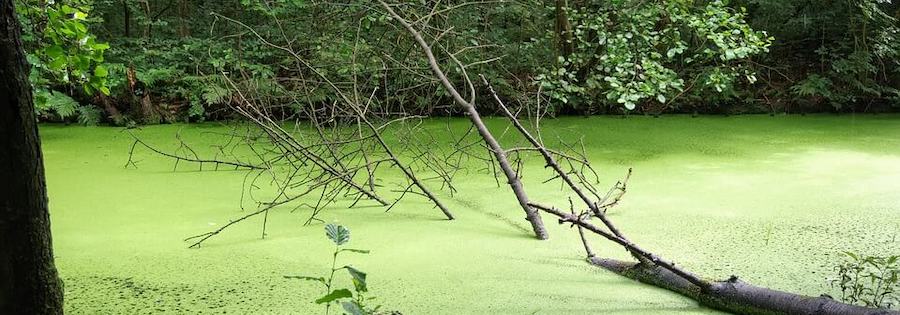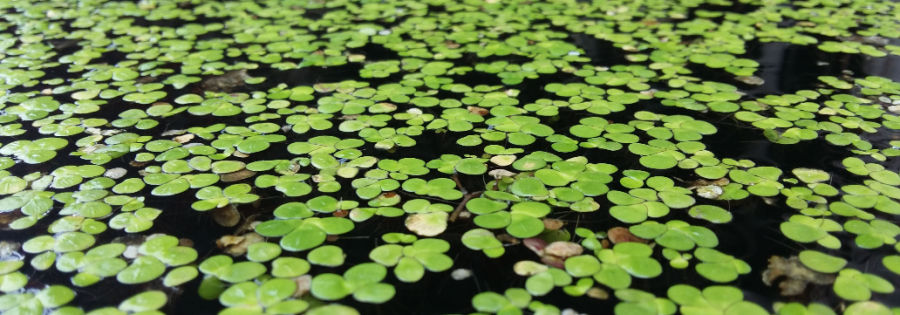How to Remove Duckweed from A Pond: 5 Tips from the Pros

Removing duckweed from a pond can be a challenge, but there are some tried and true methods that can help. By understanding the biology of duckweed and developing a tailored management strategy, you can effectively control its growth in your pond or lake. In this quick guide, the experts at Coastal Spray explain what steps you need to take to keep duckweed under control.
5 Steps for Getting Rid of Duckweed
Duckweed plants can be a nuisance if you have water on your property. A seed-bearing plant, duckweed tends to grow in colonies and calm water. And it is very aggressive; it can easily take over an entire pond. Additionally, duckweed colonies often cover the whole surface of a body of water, cutting off oxygen to the water below and making it hard for animals like fish to survive. If you have a pond or lake on your property and want to ensure that duckweed does not take over, the following tips can help.
1. Add Natural Duckweed Predators
One of the best ways to control duckweed is to add its natural predators to the water and the area that surrounds it. Some of the most popular predators that like to eat duckweed are koi, goldfish, and grass carp. These fish won’t get rid of a large duckweed problem, but they will help ensure that one does not start (or that a small amount of duckweed does not become larger).
2. Aerate the Water
Duckweed prefers to grow in water that is stagnant or very slow-moving. To rid your water of a duckweed problem, you can try aerating it. Using bubble aeration will discourage growth and kill duckweed plants that have already grown. Aerating a pond can also help reduce any foul odors associated with the water.

3. Rake the Water
You can physically remove duckweed from the water’s surface using a rake. Simply rake the leaves together and remove them from the water’s surface. Be sure to dispose of the plant far away from any water source so that wind, runoff, and animals don’t move the weed back into the water. You can also use a vacuum to remove duckweed from the water’s surface if you’d prefer not to rake it by hand.
4. Prevent Waterfowl Access
Waterfowl might be pretty to look at if you have a body of water on your property, but they can significantly worsen a duckweed problem. Waterfowl feed on this plant, which means they often have some of it stuck to their feet, beaks, and feathers. To control waterfowl access, you can make your area less inviting to these birds by creating a steep bank into the water, removing aquatic vegetation, and using noise-making devices to scare them.
5. Use Safe Chemicals
There are safe chemical options that you can use on duckweed to help stop colonies from growing. One of the chemicals on the market is called Sonar™, which contains a chemical called fluridone. Another herbicide that can help with controlling duckweed is diquat dibromide. This chemical is often sold as Reward. Finally, another safe chemical for duckweed control is Flumioxazin. This is a fast-acting herbicide, and it is most effective when you apply it to young, actively growing plants.
Discover Coastal Spray’s Aquatic Control Programs
If you have duckweed growing on the surface of a body of water on your property, these steps should be taken to remove the weeds and fix the problem. In addition to fixing any existing problem, be sure to take preventive measures, such as aerating your water and discouraging waterfowl from hanging around, to ensure a new problem doesn’t start.
Coastal Spray has decades of aquatic control and pest management experience. Our licensed technicians use state-of-the-art equipment to remove unwanted aquatic pests and invasive species that can harm the environment. Our aquatic control programs cover most bodies of water, such as ponds, rivers, lakes, waterways, and bayous.
To learn about our duckweed removal services, call (866) 392-2144 or contact us online for more info.